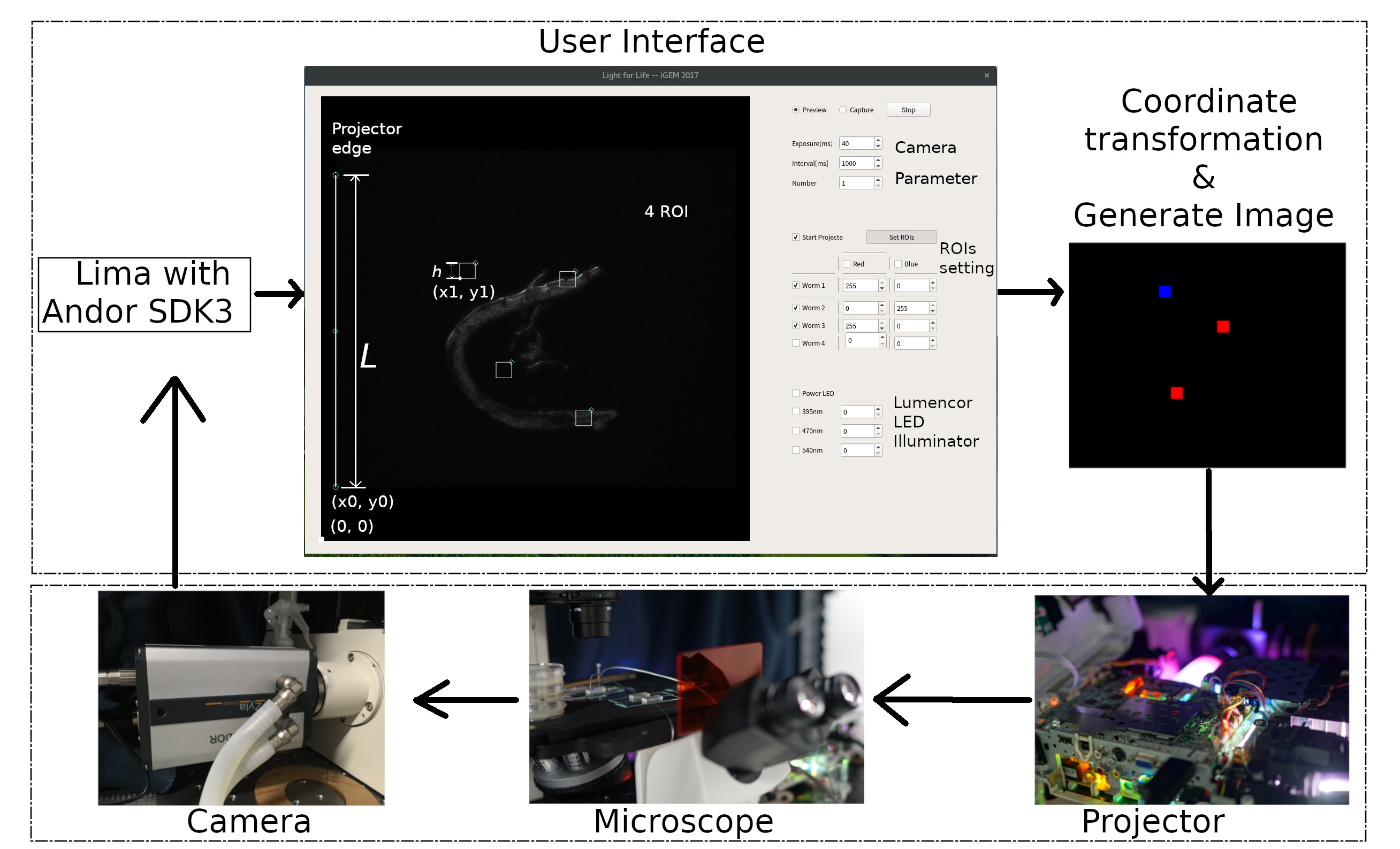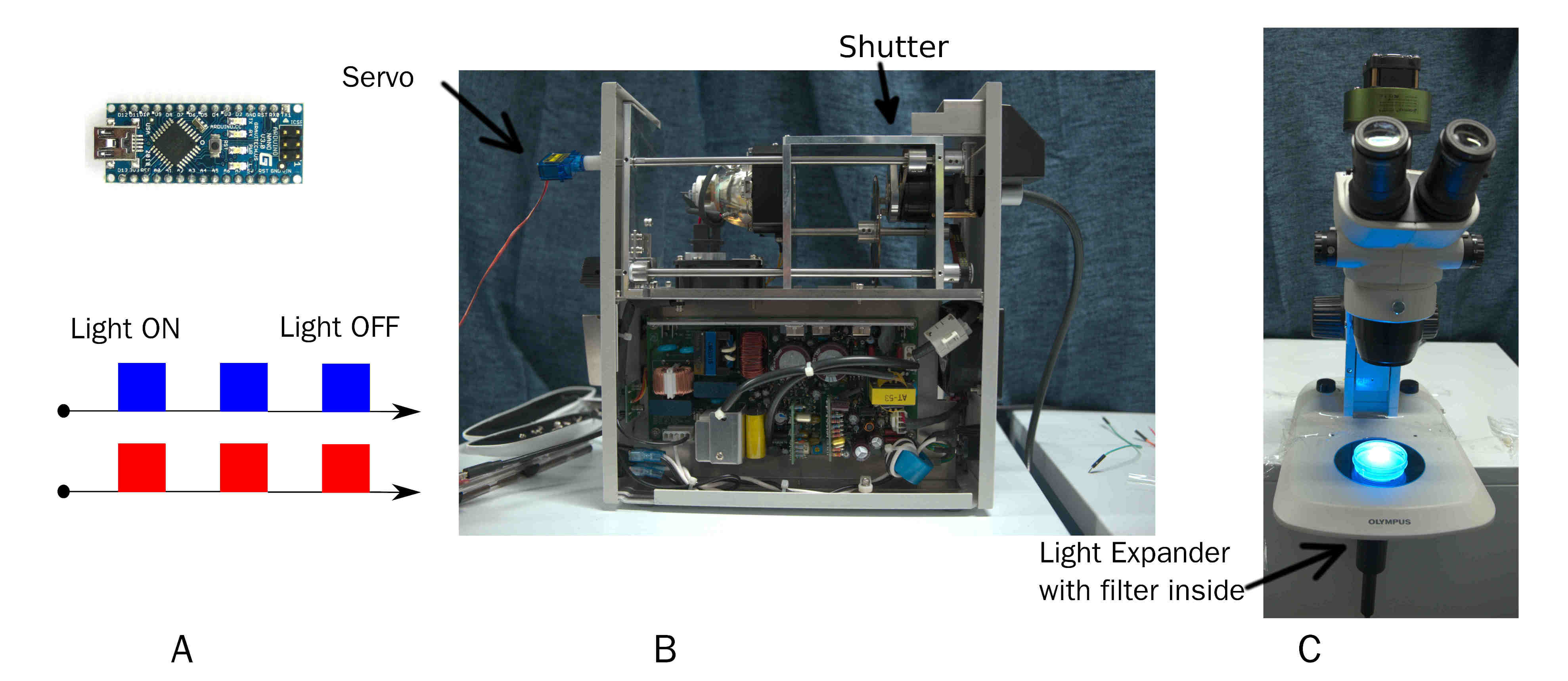Contents
Microfluidics
In our experiment, we want to study the neural network activity and behavioral response of Caenorhabditis elegans under light stimuli of specific wavelengths. Thus, we need to design an accurate and user-friendly platform for studying the collective behavior of worms with high throughput as well as live neuron-level observations under natural conditions.
To meet these design goals, we designed three microfluidic chips: the Selection Chip to select worms of appropriate sizes, the Gaussian Plate to monitor changes in the worm’s group behavior, and the Immobilization Plate to observe live neuron activities without anesthetization. (Fig.1)
Light Modulator
Multiple devices of optics are designed and created for the various experiment requirements, such as, stimulate neuron of C. elegans, train C. elegans and induce C. elegans move in a special direction. All devices attempts to modulate the spatio-temporal pattern in an elegant and effective way. We constructed projector light source and modulated mercury lamp. Just let us start to play with light.
We use 395nm light to activate calcium indicator protein GEM-GECO by Lumencor LED Illuminator. Then CoChR and Chrimson are activated by blue light and red light from LCD projector. LCD projector and LED Illuminator are merged by a double LH Adapter contained a semi-transparent mirror, which connect to microscope. So we can use these two light source in the same time. To achieve the aim, we add additional filter to purify the red light and blue light and replace new lens to adjust the focus distance(Fig. 2).
We try develop a powerful and hackable open source software suite called ColorMapping to track and activate multi C. elegans or cell independently in one view(Fig. 3). User can modify multi color, intensity, time, locations of light alternately. ColorMapping can be found in GitHub, which still is developing.
For training C. elegans, we develop a simple and effective device to output pulse of certain wavelength of light. On time and off time of pulse is custom by chip. Wavelength of light is changed by replacing filter inside beam expander.(Fig. 4)









